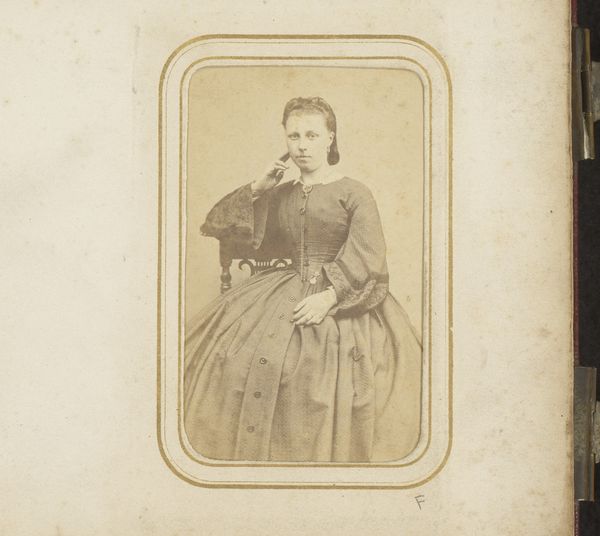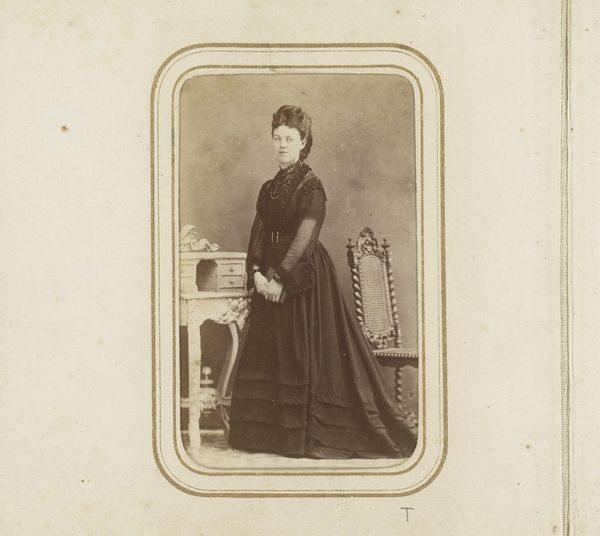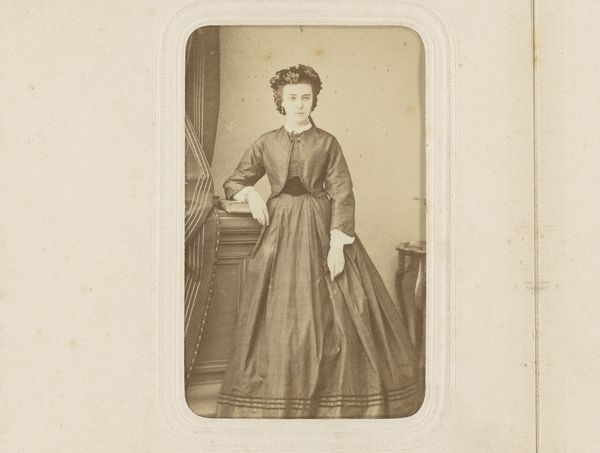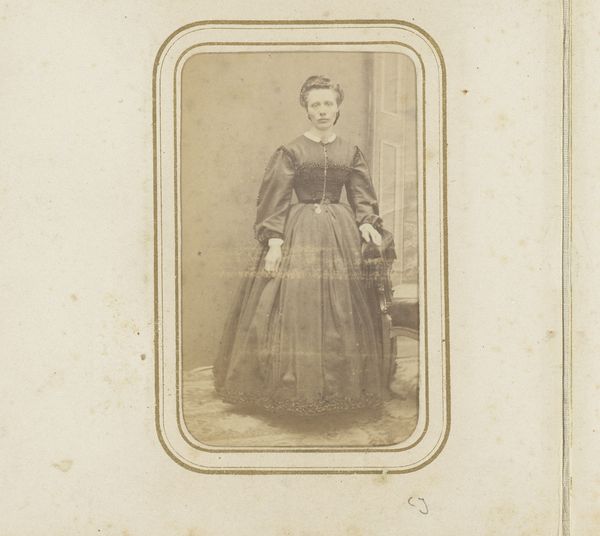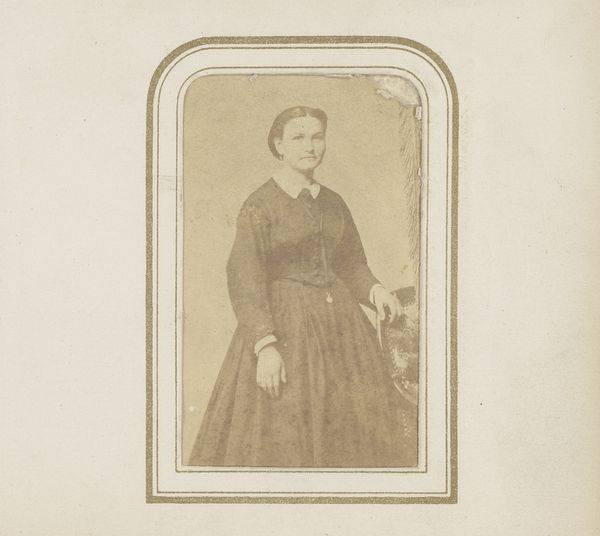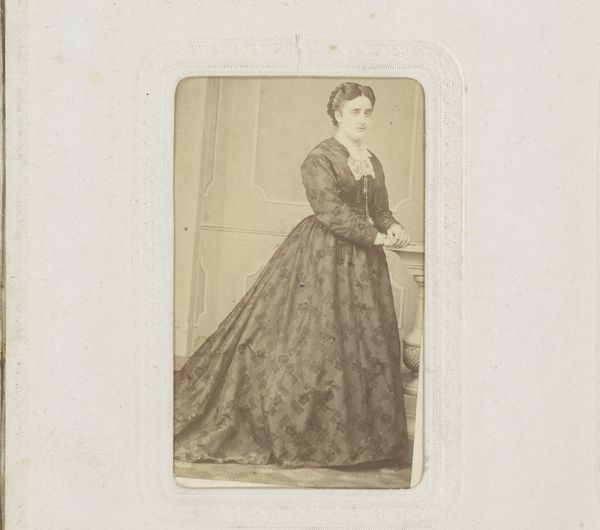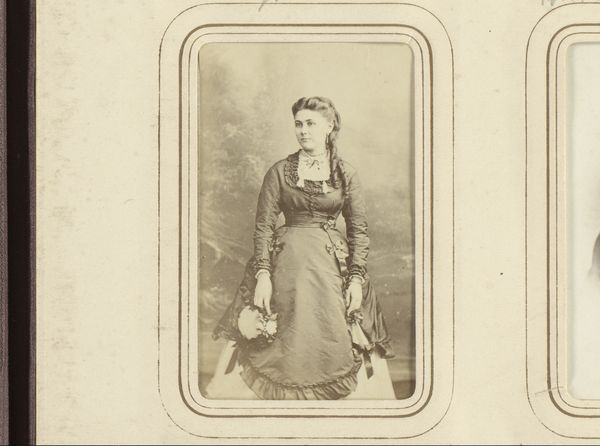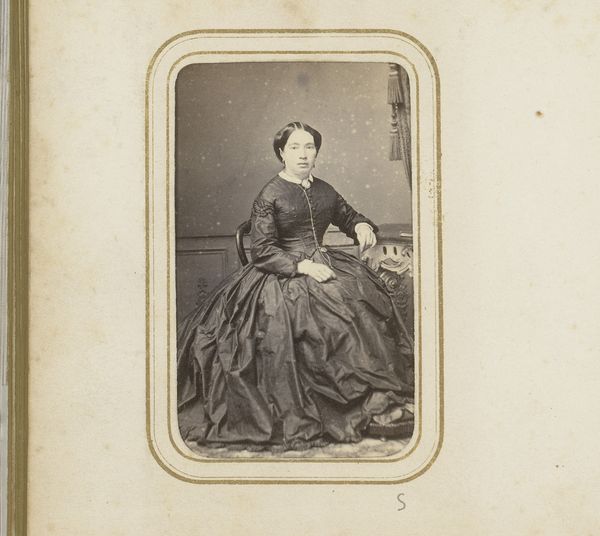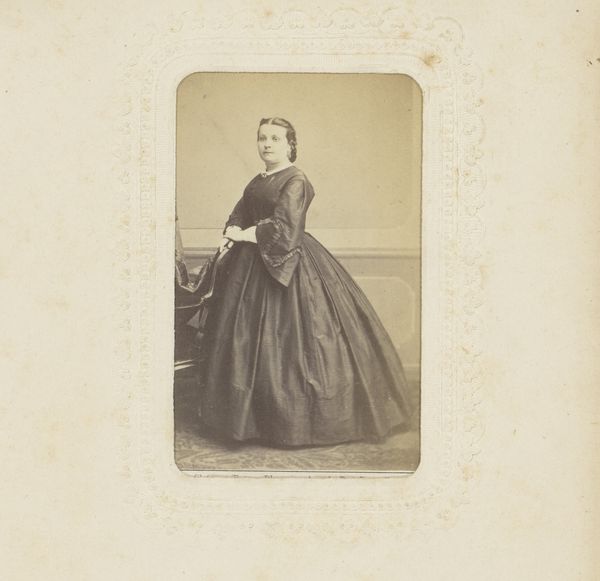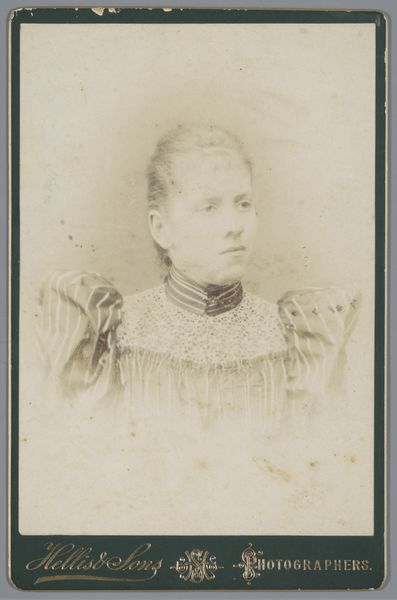
photography
#
portrait
#
photography
#
genre-painting
Dimensions: height 83 mm, width 51 mm
Copyright: Rijks Museum: Open Domain
Editor: This is an 1860s photograph entitled "Portret van een zittende vrouw" by J.M. Hessing and D. van Proijen. It shows a seated woman; what stands out to me is the weight of her dress and her somewhat detached expression. What do you see in this image? Curator: The photographic portrait is heavy with the symbolic weight of societal expectations. Note the carefully constructed pose, the formality of dress. She is contained within a very rigid boundary; the rounded rectangle feels constricting. The very fact she is *seated* speaks volumes – who was allowed to take up space, who was encouraged to shrink and be still? What stories of expectation do you think are woven into the photograph itself? Editor: So, her stillness and the severity of her clothing represent cultural norms of the time? I guess I hadn't thought about it that way; the framing felt more like a design choice to me. Curator: It is! But consider the dual purpose: a design element *and* a psychological framing. Look at how the ornament mirrors the very delicate jewelry near her neck; perhaps it signals how identity and artifice are inextricably linked. It's a powerful symbol of the carefully constructed image of women during that era, what do you think? Editor: I see it now! It’s like the frame isn’t just *around* her; it’s a reflection of how she must have felt, too, trapped within social expectations. Curator: Precisely! Photography was, and is, always so much more than capturing a likeness, the same is true for painting. It’s about encoding cultural memory. Editor: That gives me so much to consider, it’s more than just a pretty picture of a woman! Thank you!
Comments
No comments
Be the first to comment and join the conversation on the ultimate creative platform.
